Amalia Pica (b. 1978) sees the possibility of being playful in the most unlikely places. The London-based Argentinian artist is celebrated for her expansive multimedia practice that delves into important topics, such as how childhood, language and government quietly shape our daily lives. But Pica’s brightly colored, even joyful, designs tackle such rigorous and complex concepts with her signature blend of delight, wonder and humor.
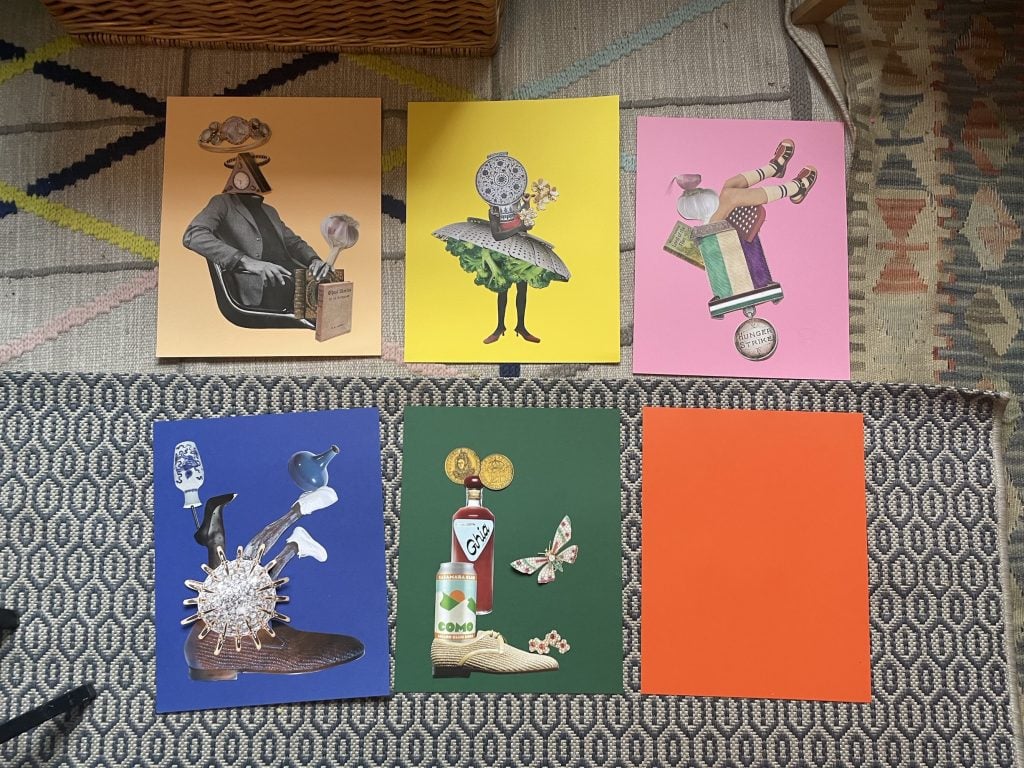
Courtesy of Amalia Pica’s Studio.
Now the artist, who is represented by the Tanya Bonkadar gallery in New York, will open a new exhibition, “¡Long live the paper!” at the Museo Jumex in Mexico City (from July 26 to October 8).
This exhibition explores the potential for fun and play within the often dull and mind-numbing confines of office life. Papeleo, Or paperwork, becomes the fundamental element of an array of artworks that cleverly engage and subvert the mundane formalities and processes of a workplace bureaucracy. For example, to enter the exhibit, visitors must complete an entry form, meaningless, in an exercise that parodies our societal participation in often arbitrary rituals, before guiding visitors through a maze of booths. In this way, Pica’s works point to the realities and social systems we inhabit, but with a sense of unerring freedom, wit, and flashing provocation that is uniquely invigorating.
The artist creates her multi-faceted works – which span sculpture, drawing, photography, performance, video and installation – in the London studio she has occupied for a decade. Recently, Pica gave us a sneak peek — a real treat since she rarely has visitors — what she loves most about space, where her schedule is next, and why she has a no-food studio policy.
Tell us about your workshop. Where is it, how did you find it, what type of space is it, etc. ?
I have a studio with Space Studios, a charity that takes over buildings and rents them out to artists at a more affordable rate. This does not mean that London studios are actually affordable, but somehow possible thanks to them. It is a large independent room, quiet and green, but also dilapidated. The best thing about the studio is that it has central heating. This shouldn’t be uncommon, but most London studios don’t have heating. It took me a decade to find this gem.
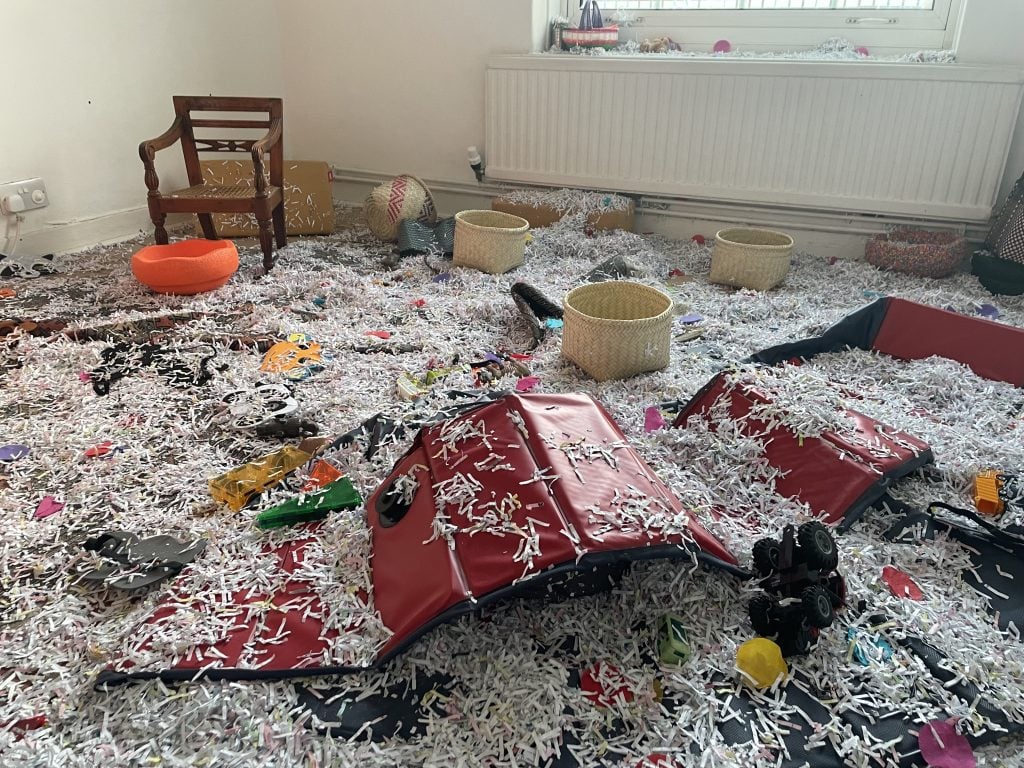
Courtesy of Amalia Pica’s Studio.
What made you choose this studio over others?
Besides the temperature, what I like about this studio is its proximity to my apartment. I can walk here through a nice park in 15 minutes, although most of the time I cycle.
Do you have studio assistants or other team members working with you? What are they doing?
I have a wonderful part-time assistant, Rebeca, who is also an artist in her own right. And even when we need more help with a specific project, I try to get other people to come on the same days that she’s here, so I still have days for myself in the studio. Working with another artist often means being flexible when they have an upcoming exhibition or need to travel for their own work, but I find the dialogue in the studio richer, so I think it’s worth it. I don’t have a practice that is always the same, so Rebeca’s work also changes. She mainly takes care of logistics, emails, couriers, receipts, but also sometimes the work is more practical, like making a digital model for an upcoming exhibition, or doing collage, cutting or testing new materials.
How many hours do you typically spend in the studio, what time of day do you feel most productive, and what activities take up the majority of that time?
My days are never the same. Some weeks I have long days in the studio and some days I only come for four or five hours. I try to do emails at home and work in the studio, but when I have help, we often and mostly deal with emails and communicate with institutions about future shows. Previous works also generate a permanent flow of logistics. People might think you’re doing a work of art and moving on, but older work requires a lot of babysitting. Transport, moving, storage, reinstallation, conservation and questions from others keep coming up, even when I have left a work or a series.
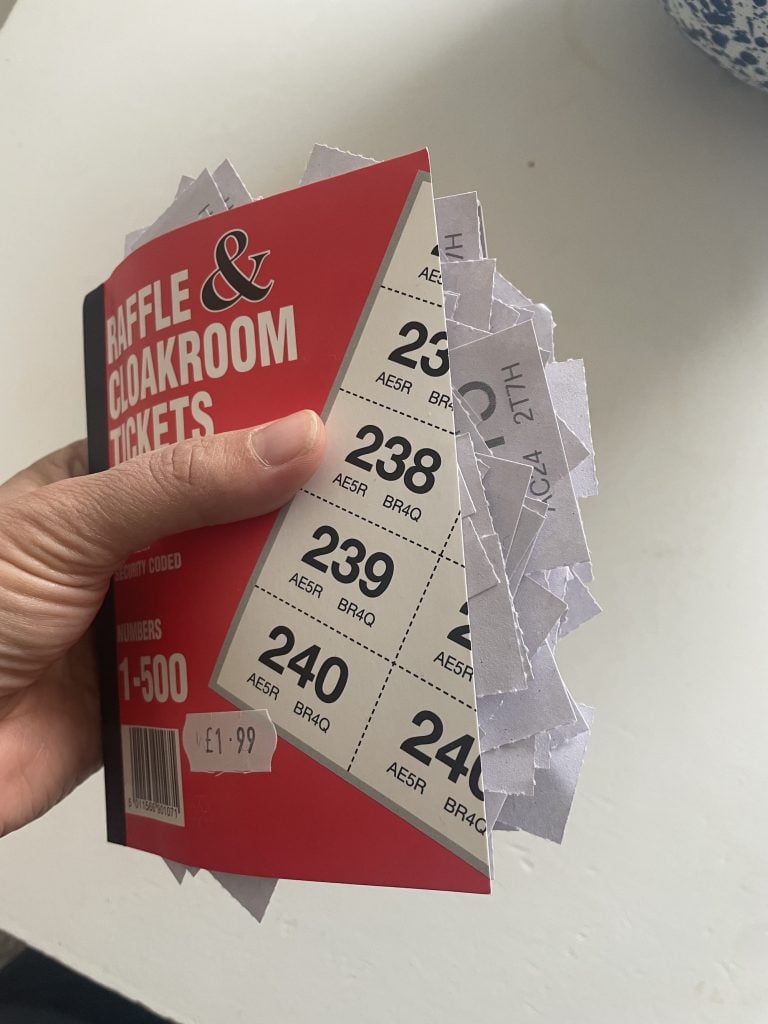
Courtesy of Amalia Pica’s Studio.
What’s the first thing you do when you walk into your studio (after turning on the lights)?
I often have to tidy up my desk from the previous semester as I always work until the last minute I’m here and never allow time to clean up. In a way, I’d much rather walk into a messy studio. An empty, tidy studio is too intimidating, and a rare sight in my case. Even when I’m done working on something and need to travel to set it up, I try to make sure I leave something halfway to meet me and make my way to the studio easier the next time I’m there.
What is the studio task on your calendar this week that you are most looking forward to?
I have to pick colors for a maze I’m making out of office partitions for my upcoming show at Jumex in Mexico City. I often experience decision fatigue, so I try to make these kinds of choices at the start of the day.
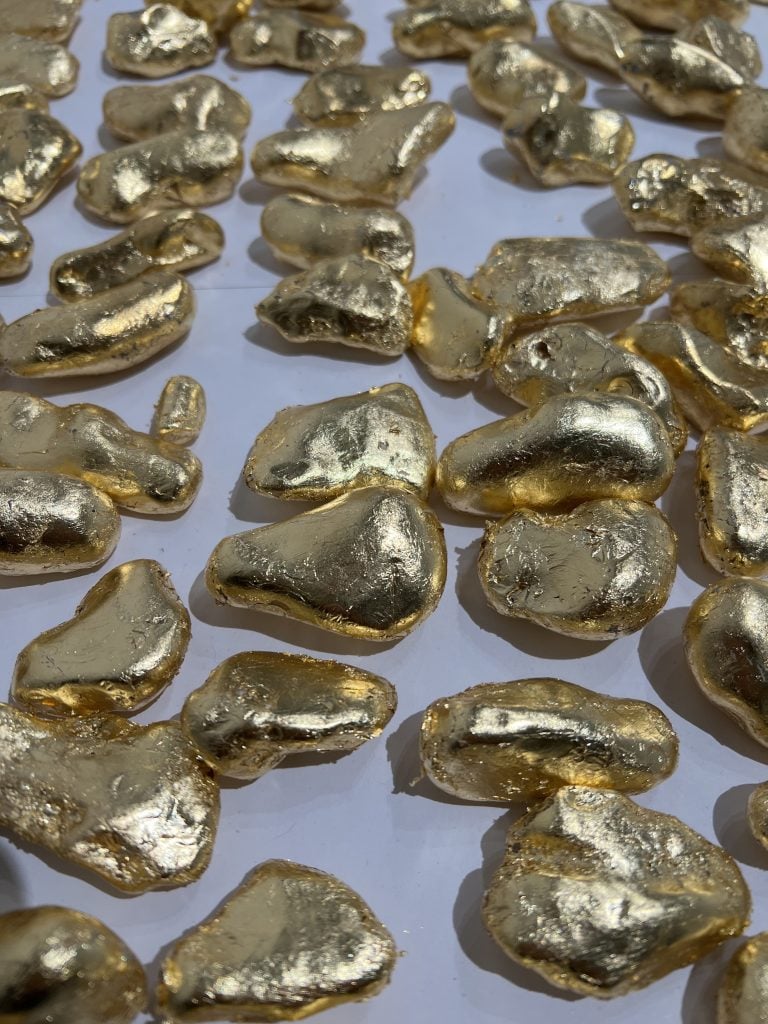
Courtesy of Amalia Pica’s Studio.
What are you working on at the moment?
I only ever have one work in progress, but several. I work on sculptures with found objects which I then send to a foundry to be cast in bronze. The series is called paperweights and is about all the different types of objects that come across my table when I work from home. I don’t just work in the studio, and so sometimes domestic and professional material culture collide at my table, creating absurd encounters that are actually quite realistic representations of what life is like as an artist, as a parent, and simply as a person. I think that has definitely been exacerbated during the pandemic.
I also work on collages from the “Catachresis” series and have experimented at home using shredded confidential waste as a play item.
I’m also experimenting with clickers used by museum guards to monitor audience numbers. I want to do an installation with them, so I’m testing in the studio.
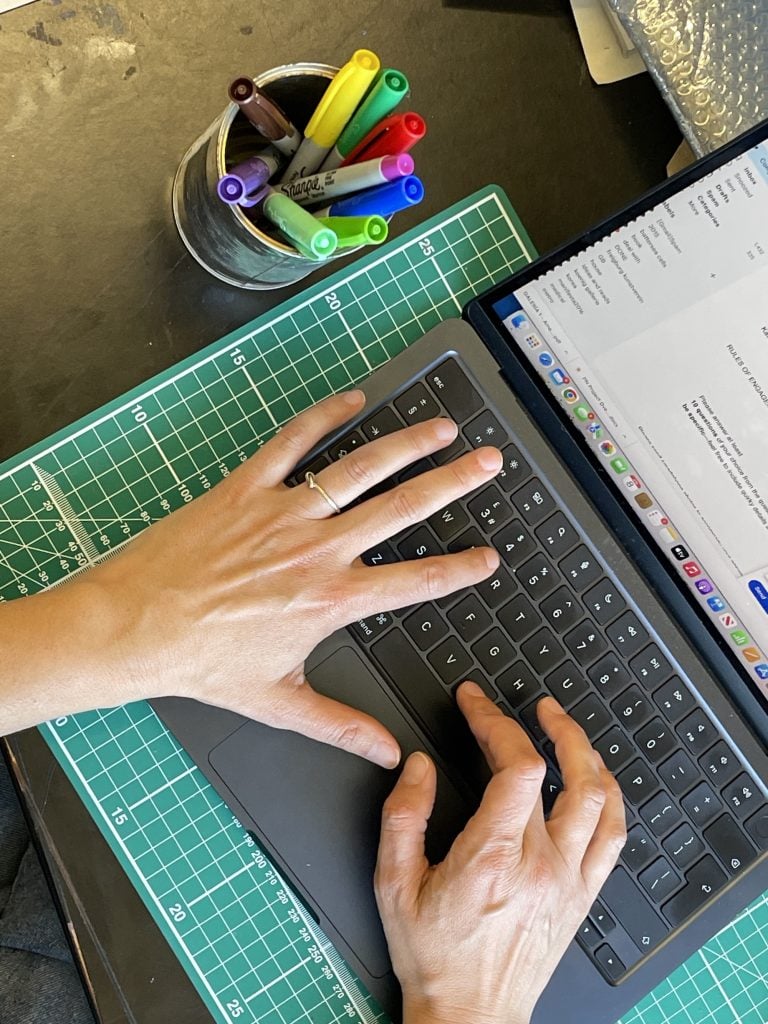
Courtesy of Amalia Pica’s Studio.
What tool or art supply do you most enjoy working with, and why?
Paper and scissors. I love cutting things. I’ve loved scissors since I was a kid.
What atmosphere do you prefer when you work? Is there anything you like to listen to/watch/read/watch etc. in the studio to inspire you or as ambient culture?
I like the silence and I don’t have finished work around or hanging on the walls.
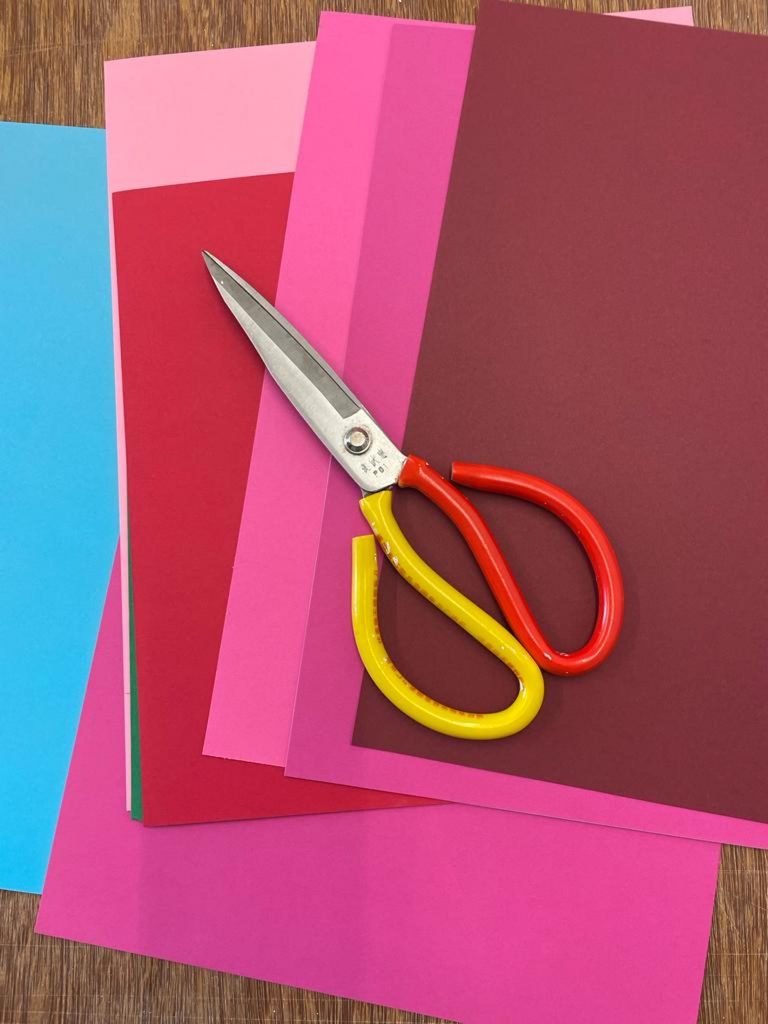
Courtesy of Amalia Pica’s Studio.
How do you know when a work you are working on clicks? How do you know that a work you are working on is a failure?
Every work of art is different, so “knowing” always takes a different form. It is an anxious process, constantly questioning a work for its right to exist. But as I’ve been doing work for several decades now, I’ve learned to handle that uncertainty better and to know, that at some point, I will know.
When you feel stuck while preparing for a show, what do you do to get out of it?
Anything but sitting in the studio. I use distraction a lot. If I need to be at the studio, I call a friend.
Where do you get your food from or what do you eat when you’re hungry in the studio?
I bring things from home that I eat during the day. Generally speaking, I don’t like to eat at the studio. It’s distracting and I don’t like the idea of inviting mice to share the space.

Courtesy of Amalia Pica’s Studio.
Is there anything in your studio that a visitor might find surprising?
The level of disorder, clutter. I don’t like people coming. Making a piece of art already feels very exposed to me, so I feel like the studio is a safe intimate space that I don’t like to share. Most of all, I don’t like cleaning up for visitors.
What is the most chic object in your studio? The most modest?
A much more expensive pair of fabric scissors than it looks.
My office is just an old desk that someone left in an old studio. My main work table consists of a large wooden board that I use to stretch paper when making large watercolors and two legs that allow its height to be adjusted.
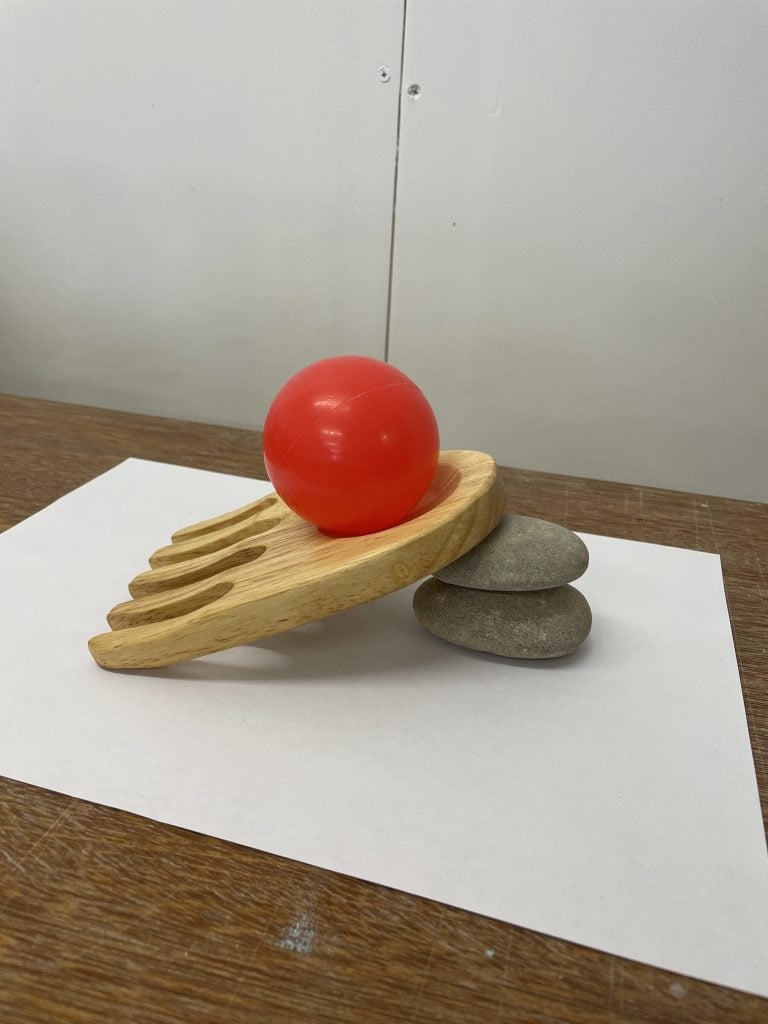
Courtesy of Amalia Pica’s Studio.
How does your studio environment influence the way you work?
I would probably do more work if I had more space. Not sure that’s necessarily a good thing as I often like small works of art.
Describe the space in three adjectives.
Messy, bright, busy.
What’s the last thing you do before leaving the studio at the end of the day (other than turning off the lights)?
I always run to pick up the nursery, but I always make sure there is no organic waste left.
What do you like to do right after?
I jump on my bike and it clears my head before I go somewhere else.
Follow Artnet News on Facebook:
Want to stay one step ahead of the art world? Subscribe to our newsletter to receive breaking news, revealing interviews and incisive reviews that move the conversation forward.
